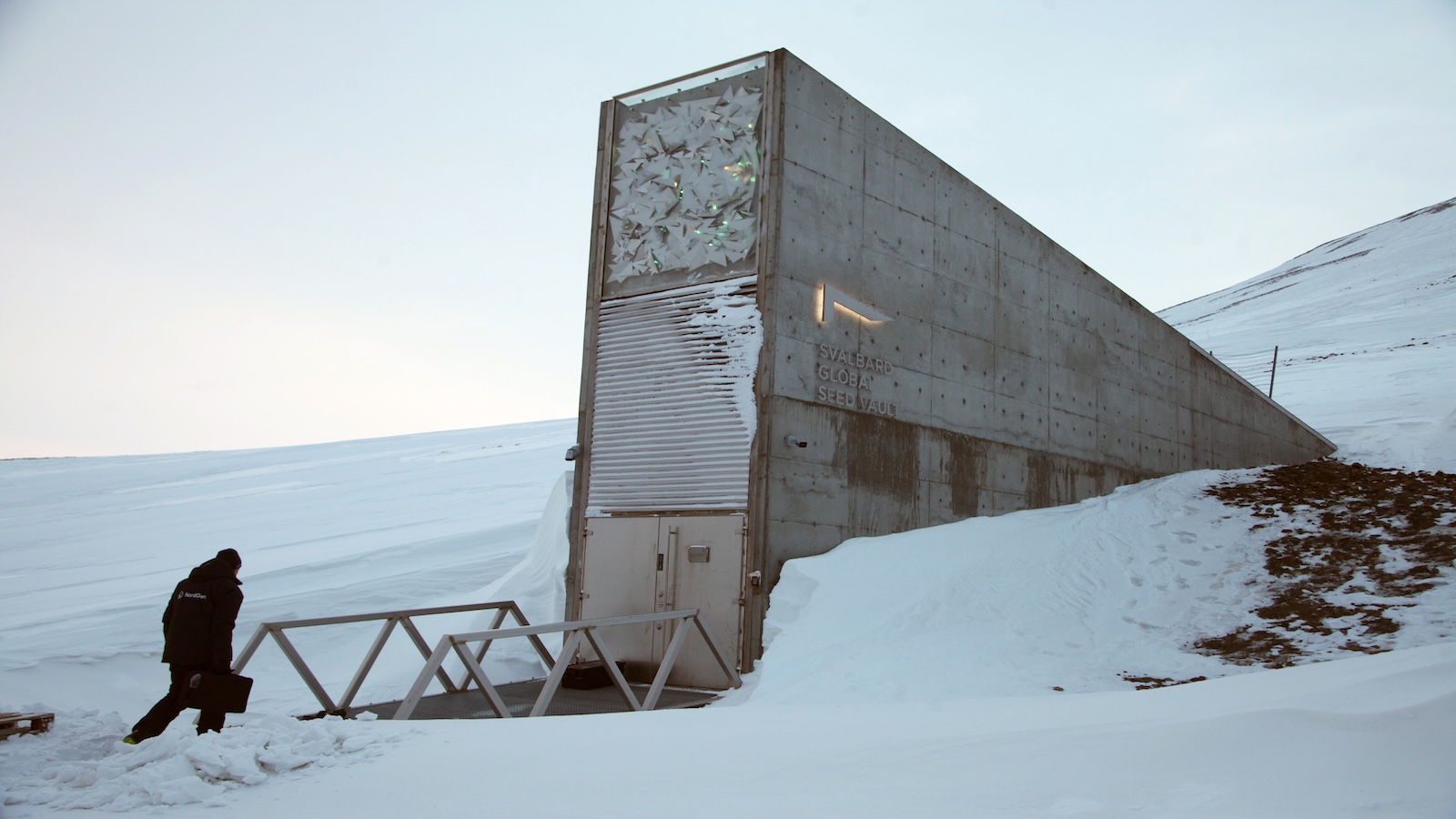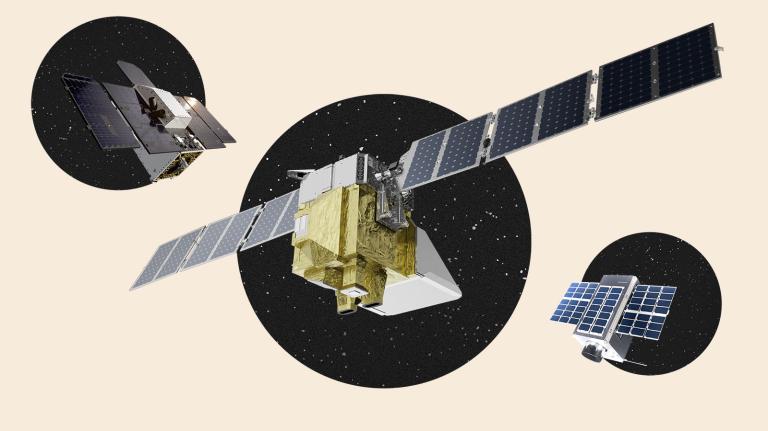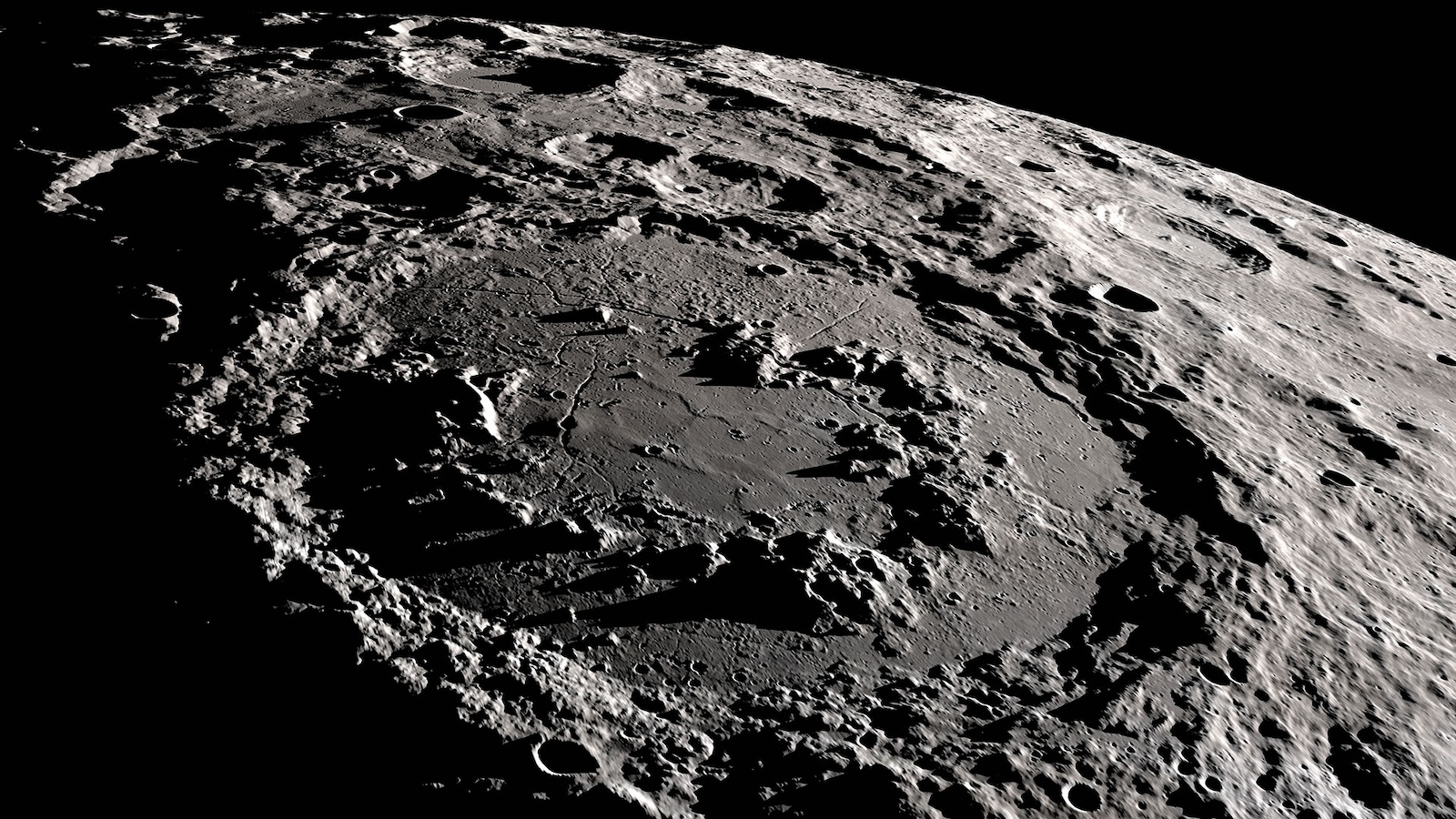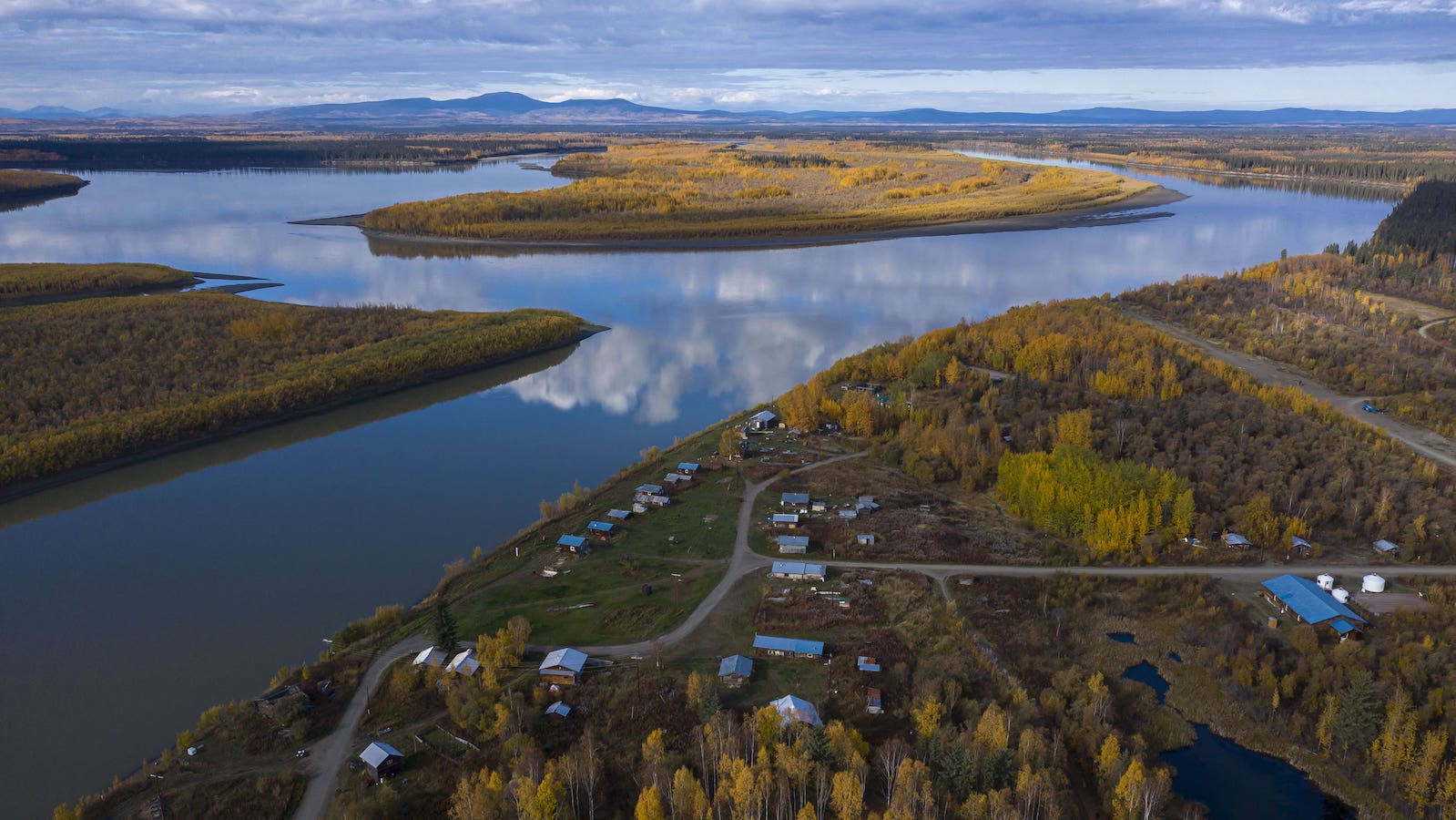In the fall of 2016, soaring temperatures caused the permafrost encasing a remote Norwegian mountainside to thaw. An ensuing flood breached the entrance tunnel of the Svalbard Global Seed Vault, built into the mountain as a fortress to safeguard the world’s seeds. The rush of water signified a dire warning: Not even a multi-million-dollar “doomsday” vault designed to fortify the world’s food supply can escape the wrath of a warming planet.
As humanity continues to blow past key climate thresholds, the security risks threatening the longevity of the repository also continue to climb. Launched in 2008 as a “fail-safe” site for more than 1.3 million seed samples, the vault is on an archipelago above the Arctic Circle that researchers have since identified as warming six times faster than the global average. Those looming threats are, in part, behind a grand vision a team of U.S. scientists introduced in a new study published in the journal BioScience: A new, even more secure vault, this time not just for seeds, but for plant, animal and microbial samples.
Oh, and they want to build it on the moon.
“In natural history museums, we think about what kind of material we’re going to keep, and where are we going to keep it, and how are we going to store it?” said the Smithsonian National Museum of Natural History’s Lynne Parenti, who co-authored the paper. As the number of species facing a threat of extinction from climate change and habitat loss continues to grow, she thinks it’s past time we reconsider how best to ensure their future survival. In addition to Svalbard, there are more than 1,750 genebanks around the world housing preserved samples of species in case they need to be revived at some future date. These vaults alone, Parenti argues, are no longer an adequate insurance policy.
“The moon is ideal in that it is remote, and it’s safe from these disasters on Earth,” said Parenti. “If we could pull this off, we think it would work.”
Automated, and without need of human maintenance, the proposed lunar biorepository would house cryopreserved cells, stored at temperatures so cold that biological activity is suspended. Cryopreserved cells likely can remain alive for hundreds of years, with the aim that the collections could one-day be thawed and used to recover DNA and entire organisms. A pseudo proof of concept already exists: The team previously cryopreserved living cells from the starry goby fish, with the expectation that these skin cells could one day regenerate the population.
“I had been thinking about how to protect species in a passive biorepository like the Svalbard Seed Vault, where no people or energy are needed to maintain the seeds,” said Mary Hagedorn, lead author of the paper and Parenti’s Smithsonian colleague. No place on Earth is cold enough to have a repository that must be held at or below -196 degrees Celsius — a prerequisite for long-term storage of cryopreserved living cells — so she and her team turned to the possibility of the moon, where some areas reach temperatures much colder than that.
If made a reality, the study authors argue that the moon vault would help secure the biodiversity of the world’s ecosystems in case of an earthbound catastrophe.
It sounds like science fiction, and the challenges to executing it are extreme — from how to ensure there is enough genetic diversity in the stored samples to make repopulating the Earth viable, to the lack of ample evidence that regeneration of species from long-term cryopreserved cells is even feasible, to the hefty price tag involved in even beginning to get this off the ground. (Hagedorn’s team currently has no estimate of the cost or timeline.)
A few weeks ago, though, the team strode further toward a realized version of this vision by expanding their ranks to include Garret Fitzpatrick and other engineers from the Harvard & Smithsonian Center for Astrophysics. Earlier in his career, Fitzpatrick worked for NASA, where he led an effort to design a system for ferrying biological samples to the International Space Station for experimentation. Sending tissues in a cryogenic stasis to the moon is a related but much more difficult challenge.
Fitzpatrick and his team are focused first on developing a demonstration mission that would send frozen cells to the International Space Station to answer one question above all others: “Can we maintain a sufficient temperature range, not just at the landing site, but throughout the mission phases,” Fitzpatrick asked, “from integration in a launch vehicle to launch, transit to the moon, landing, potentially storage, before it would ultimately arrive at its final destination?”
“It’s almost two different engineering problems,” Fitzpatrick said of the dual challenges of sending cryogenic samples to space and then maintaining those on the lunar surface.
How to cryopreserve cells of Earth species on the moon is a niche problem. But, surprisingly, a competing team is already working on it. They’re even a few steps ahead.
A cohort of engineers at the University of Arizona has been devising a system to store biological samples on the moon. The University of Arizona design started in aerospace professor Jekan Thanga’s SpaceTREx lab as a student project exploring potential use cases for the lava tubes that were discovered on the moon in the early 2010s, which could provide much needed shelter for a human presence on the moon — including a biorepository like what Hagedorn and company have proposed, or a “lunar ark” as Thanga’s team calls it.
Lava tubes form when the exterior of flowing magma hardens while the interior continues on its course, leaving an empty tube behind. They’re found all over Earth and are believed to dot the subsurface of other planetary bodies that have had periods of volcanic activity as well, a category that includes the moon. According to planetary scientists, these remnants of the moon’s molten past would provide a natural source of protection against the many threats posed to astronauts on the surface — shielding them, their equipment, and any samples they may safeguard from dangers like unfiltered radiation from the sun and deep space, as well as meteorites that strike at random and at speeds that exceed 36,000 miles per hour.
Thanga and his team have sketched a system that would use solar panels and batteries to provide the power to push temperatures inside a lava tube down to the deep freeze needed to create their lunar ark. This is the defining difference between Thanga’s design and Hagedorn’s thought experiment. Where Thanga’s group would aim to actively cool the ark, Hagedorn and the Smithsonian team have envisioned a repository that uses natural features of the moon to keep the samples cryogenic.
“The idea behind our proposal is that, to the extent we could make it, it would be passive,” Parenti said. She pointed out that people have long speculated about the idea of building something that stores materials on the moon, but all the ideas have required a crew to maintain them.
To passively maintain a perpetual deep freeze, they’ve proposed building the repository on the south pole of the moon where, inside some craters, coincidences of celestial geometry have aligned to create areas of permanent shadow, and temperatures can be as low as -196 degrees centigrade. Those conditions would mean that the samples could be stored without need for crew, and they could be maintained with rovers and robotics alone.
While in theory all of this makes these permanent polar shadows ideal for such a project, “we don’t know the basics of what that place is,” Thanga countered. Just last month, NASA canceled a mission that would have been the first rover to explore the pole in part because of the technical challenges posed. “This is one of the ironic things,” Thanga said. “It’s nearby Earth, but it’s perhaps one of the most extreme places in the entire solar system.”
Fitzpatrick feels confident, however, that NASA’s current lunar roadmap will provide ample opportunity to explore and understand those dark polar realms, including a mission scheduled for later this year that plans to land on a ridge overlooking a polar shadow. But as NASA looks to explore those regions, Thanga pointed out, it’s possible that we might merely learn more about how hard it is to exist and operate in that level of cold.
“Just operating in cryogenic conditions, that’s not trivial at all,” Thanga said. “Mechanical things do weird things. They may freeze up, latch up, you name it, under space-like conditions. Even from moderately cold conditions in a vacuum, we have a phenomenon called cold welding,” where two pieces of metal fuse on contact.
Thanga argues that the more sensible thing to do, then, is to create the ark in a lava tube since his colleagues in planetary science expect those tubes to be quite similar to the ones we have on Earth, albeit much colder, which gives researchers and engineers an understanding of what to expect and how to plan for it.
Much like Hagedorn’s concept, however, price and schedule have yet to be refined. But Thanga expects that, after the design is finalized (which could yet take years), it could be built and assembled faster and cheaper than the International Space Station.
The final price tag will nonetheless end up in the billions, a cost which, for some, may be better spent on more certain solutions here on Earth. At the Svalbard Global Seed Vault, following the 2016 flooding, which ultimately did not compromise any samples but prompted a flurry of concerns over the vault’s capacity to provide fail-safe protection, the facility’s architects acknowledged that the possibility of the permafrost melting, or such cases of extreme weather, had not been in their original building plans. Multi-million-dollar precautions have since been taken.

In 2019, the vault’s entrance tunnel walls were waterproofed, heat sources were removed, and drainage ditches were dug to prevent water from leaking in. A spokesperson at Crop Trust, an organization that helps manage the vault alongside the Norwegian government and the Nordic Genetic Resource Center, told Grist that the facility is “secure.” “It operates in an accessible location with modern cooling systems that maintain its temperature at -18 degrees C, which is ideal for seed storage. Multiple deposits are made each year and depositors can access their seeds as needed. The facility is closely monitored to protect the Seed Vault and its contents,” the spokesperson said.
“Climate change threatens many aspects of development, including crop diversity and food security worldwide. This is a much larger threat than the risk climate change poses to the Svalbard Global Seed Vault,” they added.
When asked about the proposal for a moon biorepository being, in part, motivated by the risk of climate extremes embattling the seed vault, Stefan Schmitz, Crop Trust executive director, separately told Grist that the idea of a biorepository on the moon highlights the imperative to conserve and make available crop diversity on Earth. “The systems we put in place today, the lessons we learn, and the seeds we safeguard are an invaluable resource as humanity looks towards the moon, and the stars,” said Schmitz. “Collaboration, cooperation and conservation here on Earth, right now, ensure that humans can reach for the moon, and beyond.”
For Thanga and Hagedorn, limiting modern conservation efforts to such existing systems isn’t enough.
Because of the risks of “large scale chaos and disruption” posed by climate change, nuclear war, supervolcanoes, asteroid impacts, and other potential cataclysms, Thanga said, a vault on the moon would be a way to store a “master backup copy” of life on Earth at a safe distance. Other than the choice to maintain temperatures actively or passively, Thanga believes that the two competing proposals are ultimately “very similar ideas,” a fact which “speaks to a sort of greater truth” about the importance of such an ark. In fact, he met with the Smithsonian team through a Zoom call last summer to discuss their mutual interests.
And as for criticisms that the projects might be too expensive or too far-fetched? Both Hagedorn and Thanga are confident that all that’s required for some version of the ark to become a reality is a clear, ambitious commitment from governments.
“Given enough money and NASA backing, we could do this now,” said Hagedorn. “Think about the president’s charge in the early 1960s that ‘we will put a man on the moon by the end of this decade.’ That was a far bigger jump in science and technology than what we are proposing.”
Correction: This story has been updated to clarify that Hagedorn’s team’s proposal would be a fully passive biorepository.





